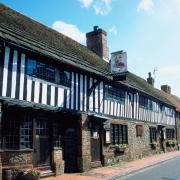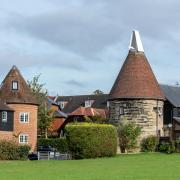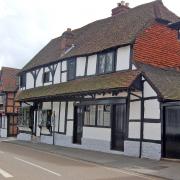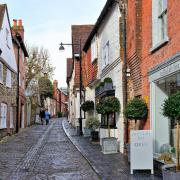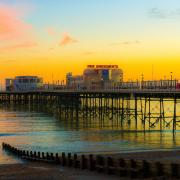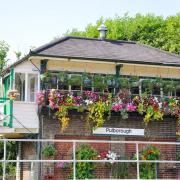The newly-announced Director and Chief Executive of the De La Warr Pavilion, Stewart Drew, has the future in his sights
When the ninth Earl De La Warr initiated an architectural competition to result in an entertainment hall with lounge, reading room and restaurant, the people of Bexhill perhaps weren’t expecting exactly what they got.The Pavilion still looks sleek, modern and other-wordly, but at the time it must have looked like it had dropped from space.When the Pavilion was built in 1935 it was a revelation to the town. Although Bexhill had a racy past as the birthplace of British motor-racing and of mixed bathing, “the desire to build a socialist, Modernist, big white structure in the middle of Bexhill was a bit surprising,” says newly-confirmed CEO and Director Stewart Drew. “Ever since, I think the Pavilion has been a little bit controversial, a little bit out of place, a little bit testing…but I think that’s what makes it interesting.”Stewart got his new job title on 1 January 2013. He had been Acting Director since the death of former Artistic Director Alan Haydon in October 2011, but Stewart actually joined the De La Warr Pavilion way back in 2005. “I was involved in a Lottery-funded project, working nationally to put the applied arts in lots of museums around the country through a computer system...the Tate, St Ives, Manchester Craft Centre, all the big national museums and galleries. I started to work with the Pavilion on their online strategy in September 2005 before the Pavilion re-opened in October.”In fact, his relationship with the building goes back even further: “I started visiting the Pavilion about 20 years ago for the building itself, and it was always a bit of a pilgrimage. To suddenly be in charge of that building is a bit like being in charge of Stone Henge! We see lots of public money being spent on landmark buildings, which is of course right, but if you like we have one of the originals here.”
Regeneration for the regionStewart’s own history is a harmonious and apposite union of art and commerce. His father owned a small department store in West London – “so I was on the shop floor with him from the age of about seven,” but his parents also had a strong interest in art which they passed on to their son.Stewart studied The History of Drawing and Printmaking at Camberwell College of Arts. He hoped to be a museum curator and did lots of voluntary work at the British Museum and Museum of London, but found himself pulled towards the business side of things. “I sit between the arts and business, which is quite a good mixture these days.”Being a public building, the Pavilion has to be all things to all people. It also has to pay its way. Undoubtedly, it has a lot to offer; the galleries attract regional, national and international visitors but the auditorium serves a very local audience, which is potentially a different demographic. There are also many people who visit the Pavilion as a piece of art in itself. “The Arts Council has just launched a new investment scheme with Visit Britain, so it is very much looking at culture in tourism,” says Stewart. “We did an economic impact study for the year 2006/7 which said that we were roughly worth £16m to the region.” Even allowing for the novelty of the then newly re-opened venue, that is an impressive figure. Annual visitor figures now stand at around 350,000.Since 2005, says Stewart, the region has felt the benefit of other new arts venues; the Towner in Eastbourne and the Jerwood in Hastings. “We are starting to enter a second phase in terms of regeneration for Bexhill,” says Stewart. “We are seeing almost 50 per cent return visits. Bexhill itself is now starting to sit up and take notice of what the Pavilion is doing. “Rother District Council has been extraordinary in using the Pavilion as a hook for regeneration. Bexhill Museum was refurbished by John McAslan and Partners, the same people who did the Pavilion, and we have also seen the £4m redevelopment of the seafront. Recently there has been a £35m investment in Bexhill High School. The Council has also been investing in small business parks and the final part of that is the Hastings to Bexhill link road. Rother has always said that the Pavilion lies as part the foundation of the region’s cultural regeneration.”
Thinking about the futureDay to day, Stewart is responsible for looking after relationships with stakeholders like Rother Council, the Arts Council and East Sussex County Council. “What [previous Director] Alan Haydon was very good at was assembling a team of people that could develop the organisation, myself included – giving us the skills and the vision to take what he’s created and move it into a new era,” says Stewart. Now he’s starting to build new strategies for the venue.One of the Pavilion’s biggest shows of the year is running from now until 23 June – Australian artist Shaun Gladwell’s Cycles of Radical Will. His sculpture Mini Ramp Intersection on the roof terrace acts as a skate and BMX ramp. Ensuring future audience is important, and Shaun Gladwell is a part of that outreach.Before the Pavilion re-opened, skateboarders and BMXers were sometimes damaging the Grade I-listed building or spoiling people’s experience of their visit. “What we have tried to do is bring them inside and engage with them, hence the skate ramp on the roof. We worked with a skate retailer in Eastbourne called The Source over a number of years and had a big skate and BMX festival, and Shaun is an extension of that.” Bexhill Children’s Literarture Festival, and weekly free children’s story sessions are another case in point. “It’s very much trying to bring them, their parents and their grandparents into the building and making people feel comfortable and at home.” http://www.dlwp.co.uk








